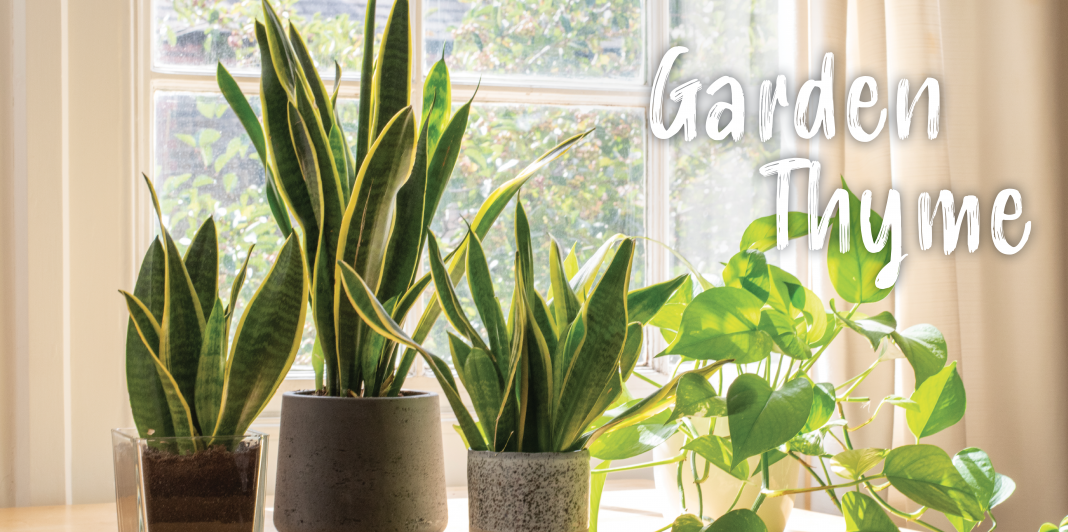Everyone wishes they could be a perfect plant parent. But unfortunately, not everyone was born with a green thumb. Perhaps you have tried to keep a plant alive only to have distressing results. Or you find yourself unable to commit time, money, and space to the outdoor garden of your dreams. Luckily, some plants are easy enough to maintain for any beginner gardener.
Indoor gardening is a popular starting point for aspiring gardeners to begin nurturing a greener living space. Raising houseplants has been proven to be linked to substantial health benefits. Taking care of an indoor plant can be therapeutic and lower stress levels all while purifying the air in your home. Vibrant houseplants also freshen up a dull space and make great finishing touches as practical decor.
Low-maintenance plants are attractive for many different reasons. First, container plants do not require as much space as large shrubs or flower beds. They are also perfect for people who spend most of their time away from home. Some of the easiest plants to raise tend to flourish even when they are neglected for long periods.
There are a few factors to consider before choosing the perfect indoor plants for you. Beginners should look for plants able to adapt to most living conditions including sun exposure and temperature. Your plant’s maintenance needs also should be compatible with your lifestyle, whether it’s their watering schedule or required pest control. With houseplants, there is no need to compromise style or peace of mind to have a beautiful indoor garden. To know how to get started, we have a list of seven low-maintenance indoor plants perfect for beginners:
1. Snake Plant
Snake plants (Sansevieria trifasciata) make great low-maintenance plants because of how infrequently they need watering. All you need to do is water these plants whenever the soil becomes dry to touch or when their leaves begin to wrinkle. These plants have very recognizable dark green leaves that grow almost straight up. They may be slow growers, but indoor Sansevieria plants can grow between two and four feet tall. Snake plants are also suitable for small corners and crannies that receive indirect sunlight.
2. ZZ Plant
The ZZ plant gets its nickname from its scientific name, the Zamioculcas zamiifolia. As ZZ plants are native to East Africa, they are drought-tolerant and do not need watering for weeks at a time. This tropical plant thrives best in indirect sunlight, warm temperatures, and low to moderate humidity. Depending on the amount of sunlight they receive, ZZ plants can grow several inches per season. Their smooth and waxy leaves make them a beautiful plant for offices and homes. One drawback to consider is that all parts of the plant are poisonous, so be sure to keep pets away.
3. Aloe Vera
Aloe vera (Aloe Barbadensisis) is a succulent plant that is known for growing in nutrient-poor conditions. What makes this plant unique is its use in home remedies, particularly for treating sunburns and cuts. Just like cacti, aloe vera grows best in sandy soils that drain well after watering. Water your aloe vera when the soil becomes completely dry, and water them more frequently in warmer seasons. This succulent requires bright and direct sunlight, and its small size makes it perfect to place on your windowsill.
4. Pothos
Several varieties of the pothos houseplant are said to be perfect for beginner gardeners wanting to raise their first low-maintenance plant. Pothos, golden pothos, and “Devil’s Ivy” all refer to Epipremnum aureum, a vining plant that grows best when rarely maintained. It received the nickname Devil’s Ivy after earning the reputation of being impossible to kill, even in low-light spaces. How often pothos need watering will depend on how much light they receive. But pothos can survive in almost any lighting except direct sunlight. Depending on the type of pothos you purchase, its leaves can range from bright yellow-green, flecked with white, or rich emerald green.
5. Swiss Cheese Plant
Whether you have realized it or not, you have seen the Swiss Cheese Plant (Monstera Deliciosa) everywhere from social media to interior design. This may just be the most stylish and aesthetically-pleasing low-maintenance plant ever. That’s because of their many fenestrations, aka its splits and holes, that naturally occur in their large dark green leaves. This tropical plant unsurprisingly thrives in bright to medium indirect sunlight and normal to humid conditions. The Swiss cheese plant will require a regular watering schedule at about once a week if the soil is well-drained and dry.
6. Philodendron
Houseplants in the Philodendron genus are known for their unique heart-shaped leaves. After all, their name comes from the Greek words philo and dendron meaning “love” and “tree”. Many philodendrons love to vine or climb up trees, but they also make decorations hanging off of shelves and windowsills. Most species of philodendron survive best in medium indirect sunlight and can be watered once per week. Because these houseplants tend to grow quickly, they may need to be repotted and moved to a larger container every few years.
7. Peace Lily
If you are looking for a flowering houseplant to liven up your house, then the peace lily (Spathiphyllum wallisii) might be perfect for you! What makes the peace lily great for beginners is that it’s a great communicator. Meaning you will know when the plant needs water or more sunlight when it begins to wilt or curl. These natural air purifiers can tolerate low to medium indirect light and humid climates. Every once in a while you will need to wipe the plant’s leaves to keep their luxurious glossy appearance.















